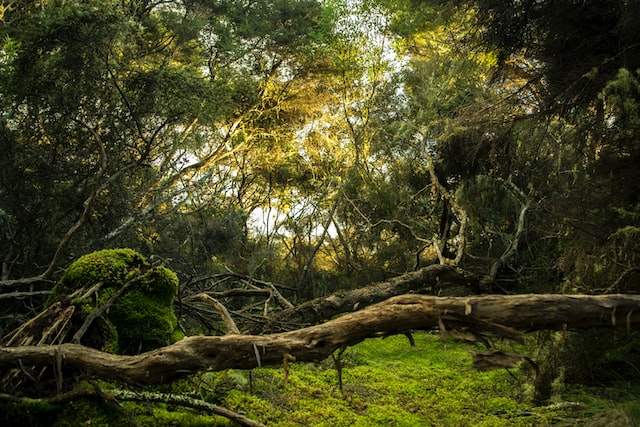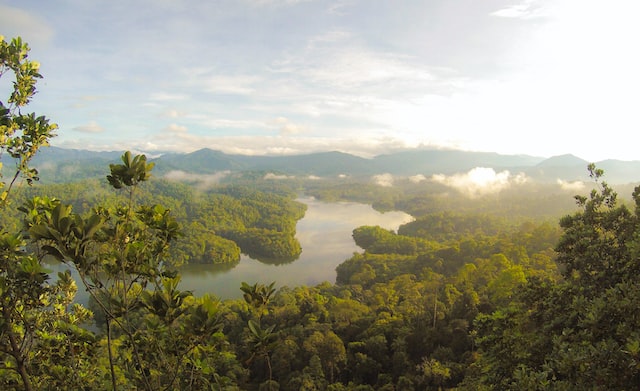Rainforests are generally much wetter than jungles and tend to be located in tropical climates near the equator while jungles can be found in various parts of the world. While they may have some similarities, these two biomes house different types of vegetation that thrive under very specific conditions.
What is a rainforest?
(Photo by Atharva Tulsi on Unsplash )

A rainforest is a forest characterized by high rainfall, with annual rainfall in the case of tropical rainforests between 250 and 450 centimetres (98 and 177 in). There are two types of rainforest: temperate and tropical. The former occurs in the latter’s geographical zone, but at higher altitudes. Temperate rainforests are found in coastal areas of North America, Europe, and Asia. Tropical rainforests occur in Central and South America, Africa, Madagascar, India, Southeast Asia, Australia, and New Guinea.
Tropical rainforests are distinguished from other forests by their density: they contain more species of trees and other woody plants per unit area than any other type of forest. They are also home to a large number of animals and insects. Rainforests play an important role in the global water cycle: they help to regulate the Earth’s climate by absorbing carbon dioxide and releasing water vapor into the atmosphere.
What is a jungle?
(Photo by Karl Anderson on Unsplash )

A jungle is a forest that is dense with trees, vines, and other vegetation. The word “jungle” originates from the Hindi word jangal, meaning “wilderness.” Jungles are found in tropical and subtropical regions around the world.
Jungles are teeming with life—including many species of animals, birds, reptiles, and insects that are not found anywhere else on Earth. The hot, humid climate of jungles provides the perfect environment for these plants and animals to thrive.
Jungles are often thought of as dark and dangerous places, but they can also be beautiful and full of wonder. Many people enjoy exploring the jungle’s dense vegetation and spotting the unique wildlife that calls it home.
What are the differences between rainforests and a jungles?
There are several key differences between rainforests and jungles. Rainforests are generally found in regions with high rainfall, while jungles tend to be located in drier areas. Additionally, rainforests typically have a greater variety of plant and animal life than jungles. Rainforests tend to be taller and more densely packed with vegetation than jungles.
One of the most notable distinctions is that rainforests are found in tropical regions while jungles can be located in both tropical and subtropical areas. This means that jungles have a greater variety of climates and vegetation types than rainforests.
Another difference between these two biomes is that rainforests typically have a more diverse array of animal species than jungles. This is due to the fact that rainforests tend to be older and more established ecosystems than jungles.
Differences Between Rainforests and Jungles
| RAINFORESTS | JUNGLES |
|---|---|
| Usually found near the Earth’s equator, Warm, humid climate | Found in warm, humid climates across the globe (not just near the equator) |
| Abundant rainfall (200 cm or more per year) | Less rainfall than rainforests (usually 100 cm or less per year) |
| Dense vegetation with a variety of trees, vines, and other plants | More dense and overgrown than rainforests, with thick vegetation that can make it difficult to move around |
| Rich biodiversity with many different species of animals, birds, insects, etc. | Biodiversity is typically not as rich as in rainforests |
What are the similarities between rainforests and jungles?
They are both types of humid tropical forests. They are both home to a diverse range of plant and animal life, including many endangered species. Both rainforests and jungles experience high levels of rainfall, typically more than 80 inches (2,000 mm) per year. Temperatures in both rainforests and jungles are also warm and humid, averaging around 80 degrees Fahrenheit (27 degrees Celsius).
The different types of rainforests
There are four different types of rainforests: Temperate, Tropical, Subtropical, and Mangrove.
Temperate rainforests are found in the Pacific Northwest of the United States and Canada, as well as parts of Europe and Asia. These forests have a cool, wet climate with temperatures rarely exceeding 68 degrees Fahrenheit. The trees in these forests are mostly coniferous, like Douglas firs and redwoods.
Tropical rainforests are found near the Earth’s equator in countries like Brazil, Congo, and Indonesia. These forests have a hot, humid climate with temperatures averaging around 86 degrees Fahrenheit. The trees in these forests are mostly broadleaf evergreens like mahogany and teak.
Subtropical rainforests are found in Florida, Mexico, southern China, and northern Australia. These forests have a warm climate with temperatures ranging from 60 to 80 degrees Fahrenheit. The trees in these forests include both deciduous and evergreen species like oak and cypress.
Mangrove rainforests are found in coastal areas all over the world including the Gulf of Mexico, Africa, India, Southeast Asia, and Australia. These forests have a warm climate with high humidity levels and frequent flooding due to their proximity to the ocean. The trees in these forests are adapted to tolerate salty conditions and include species like mangroves, palms, and oystershells.
The different types of jungles
There are many different types of jungles, each with their own distinct climate and vegetation. The three main types of jungle are Tropical, Subtropical, and Temperate.
Tropical jungles are found near the Earth’s equator and are characterized by high temperatures and rainfall. The vegetation in tropical jungles is typically dense and lush, with many different species of plants and animals.
Subtropical jungles are located in the warmest parts of the world, just outside the tropics. They have less rainfall than tropical jungles, but the temperature is still hot and humid. The vegetation in subtropical jungles is not as dense as in tropical jungles, but there are still many different species of plants and animals.
Temperate jungles are found in the cooler parts of the world, such as Southeast Asia. They have moderate temperatures and rainfall, and the vegetation is typically less dense than in tropical or subtropical jungles. However, there are still many different species of plants and animals present in temperate jungles.
Is the Amazon a rainforest or a jungle?
The Amazon is a rainforest. While the words “rainforest” and “jungle” are often used interchangeably, they actually have different meanings. A rainforest is a forest that receives high levels of precipitation, which creates dense foliage. A jungle, on the other hand, is defined as an area of land overgrown with dense vegetation. The Amazon is therefore a rainforest, not a jungle.
Where is the largest jungle in the world?
The Amazon rainforest is the world’s largest jungle. It covers an area of more than five million square kilometers, stretching across nine countries in South America. The Amazon is home to an incredible diversity of plant and animal life, including more than 2,000 species of trees and 1,500 species of mammals.
Where is the largest rainforest in the world?
The Amazon rainforest is the largest rainforest in the world. It covers an area of about 5.5 million square kilometers, which is about the size of the contiguous United States. The Amazon rainforest is located in South America, specifically in the countries of Brazil, Peru, Ecuador, Colombia, Venezuela, Bolivia, Guyana, Suriname, and French Guiana.
What are the benefits of rainforests and jungles?
Both rainforests and jungles are essential to the health of our planet. They play a critical role in regulating global climate, providing homes for countless plant and animal species, and producing many of the world’s oxygen supply.
Apart from this rainforests and jungles provide a wide range of benefits, including:
- Biodiversity: Rainforests and jungles are home to a vast array of plant and animal species. They contain over half of the world’s species, including many that are rare or endangered.
- Climate Regulation: Rainforests and jungles play a critical role in regulating the Earth’s climate. They absorb large amounts of carbon dioxide, which helps to mitigate the effects of climate change. They also help to regulate the water cycle, maintaining a balance of moisture and preventing floods and droughts.
- Oxygen Production: Rainforests and jungles produce a significant amount of the world’s oxygen. Trees absorb carbon dioxide during photosynthesis and release oxygen into the atmosphere.
- Medicine: Many of the plant species found in rainforests and jungles have medicinal properties. Indigenous people have been using them for centuries to treat various illnesses and ailments.
- Cultural Significance: Rainforests and jungles are important cultural sites for many indigenous communities. They provide resources for food, medicine, and spiritual practices.
- Economic Value: Rainforests and jungles provide important economic benefits, including timber, non-timber forest products, and ecotourism. These industries provide jobs and income for many people around the world.
Rainforests and jungles are critical to the health of the planet and the well-being of people and wildlife. It is essential to protect them to ensure that we continue to enjoy their many benefits.
Featured Image By – Photo by Eutah Mizushima on Unsplash








